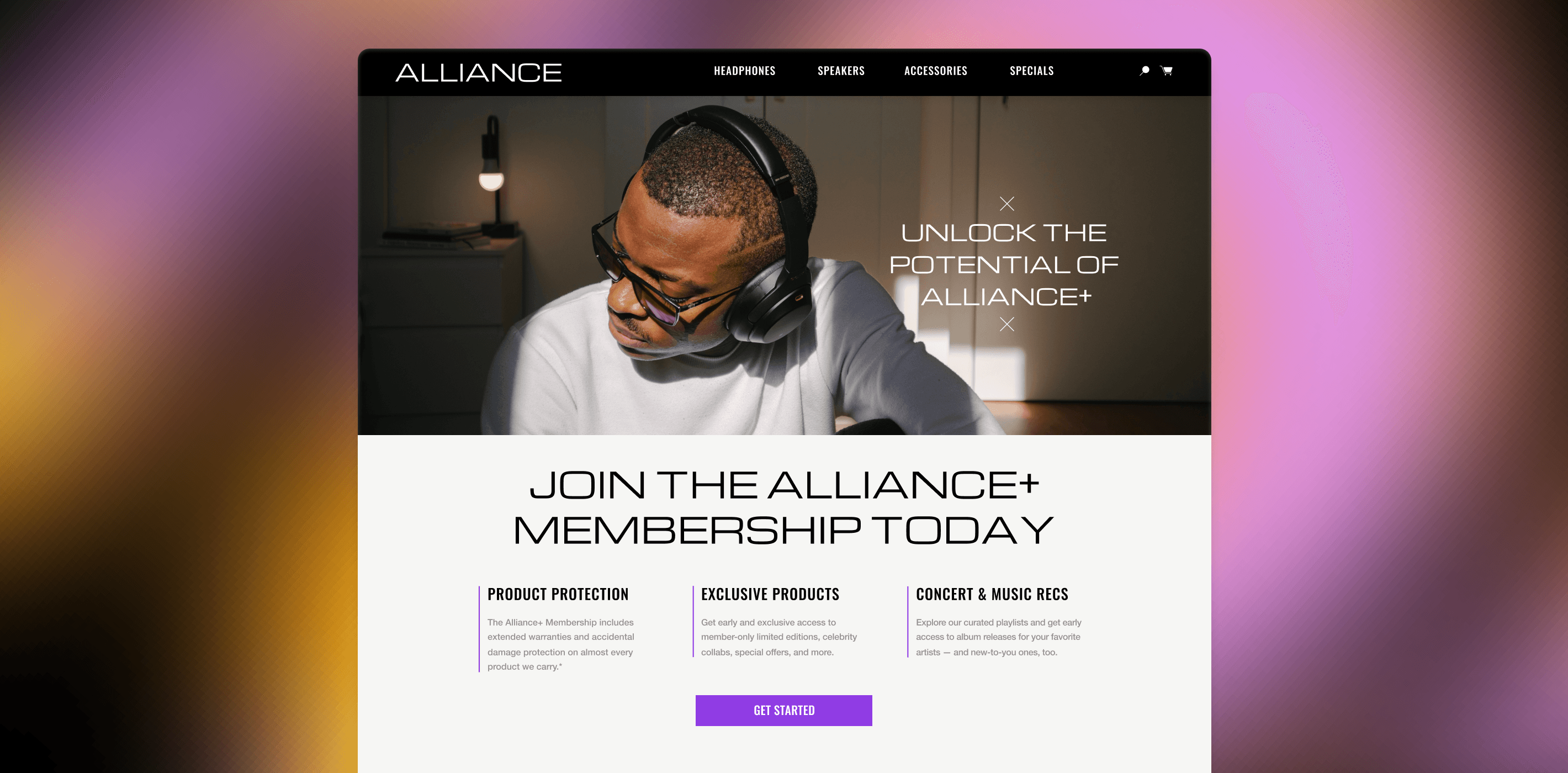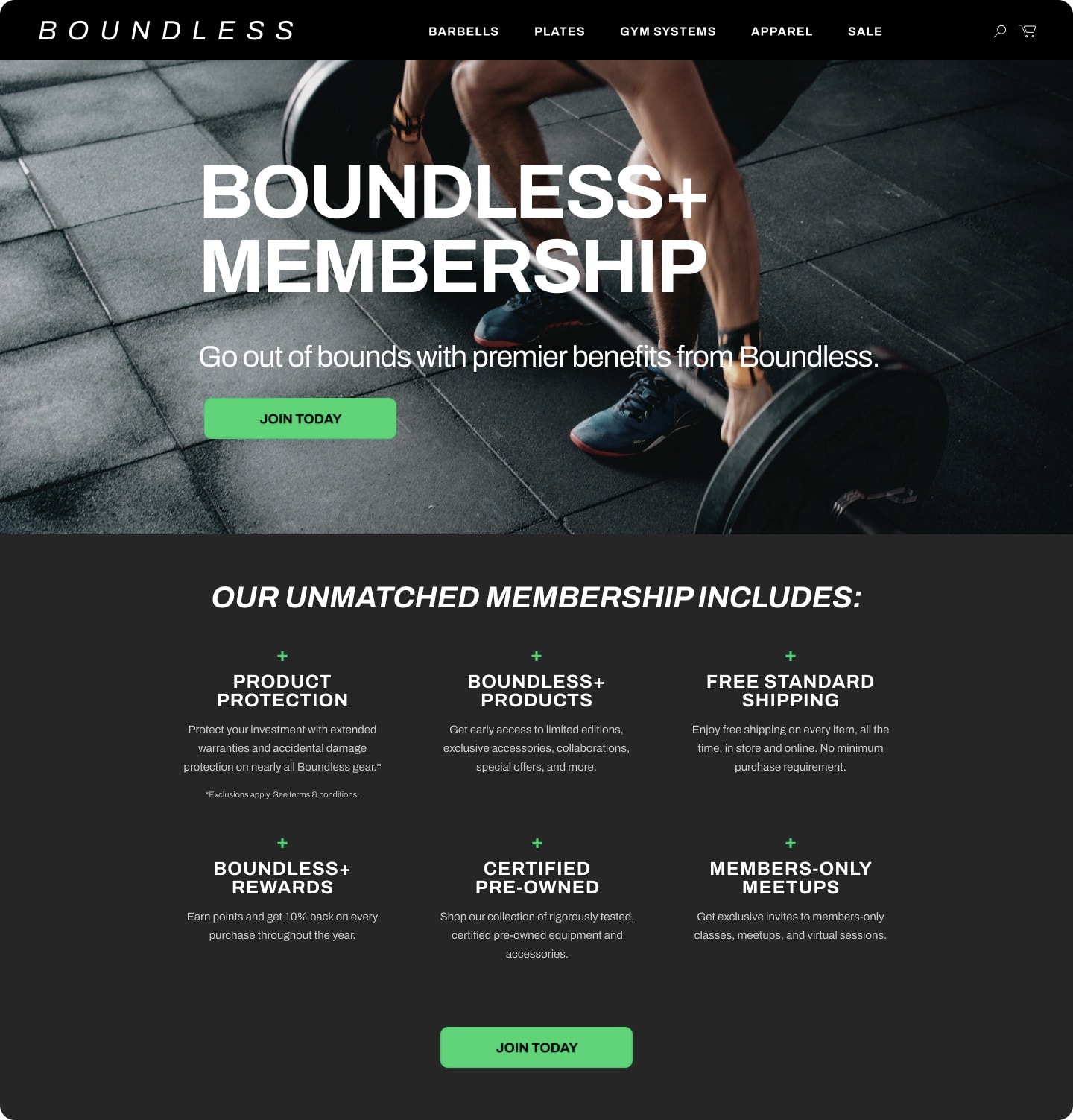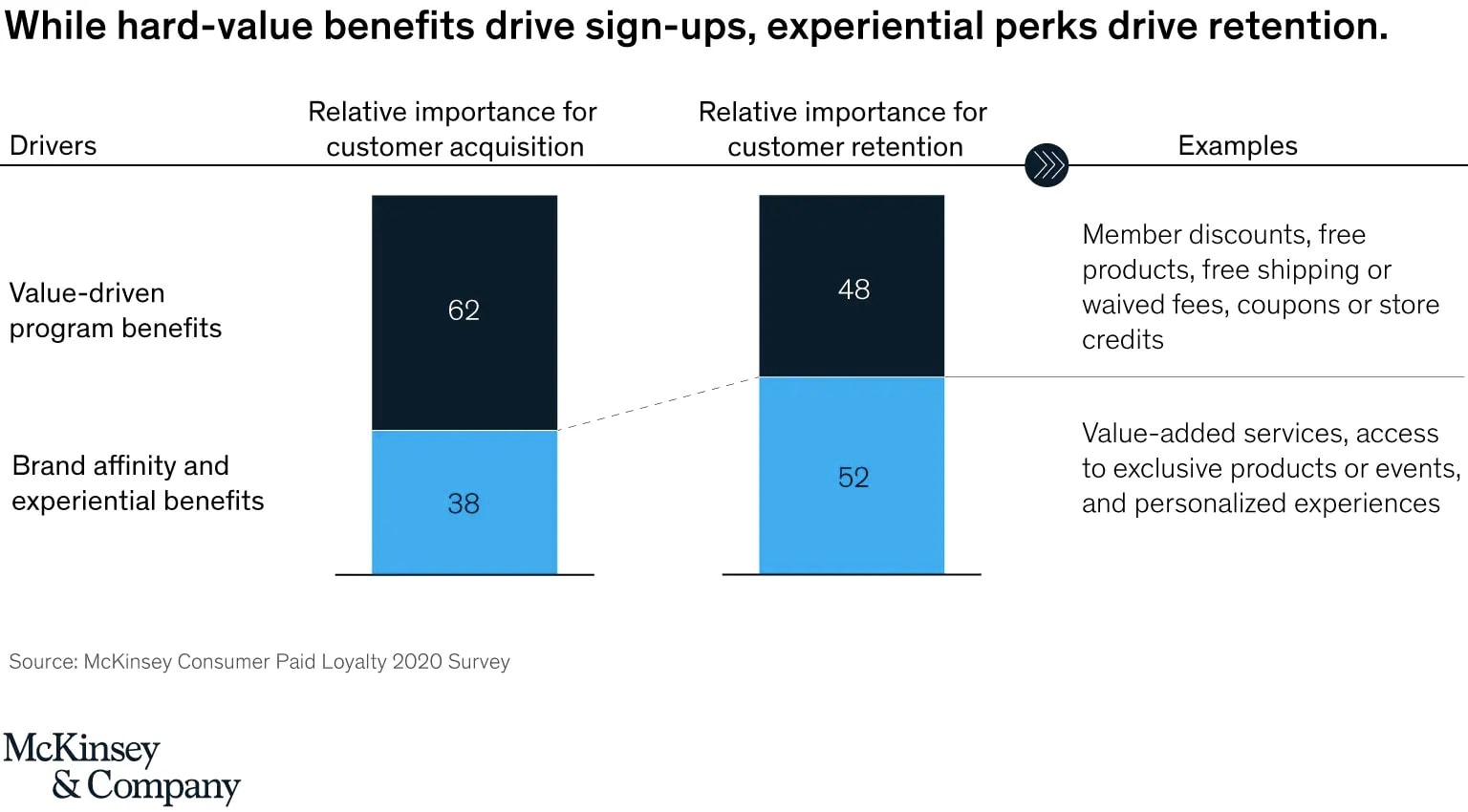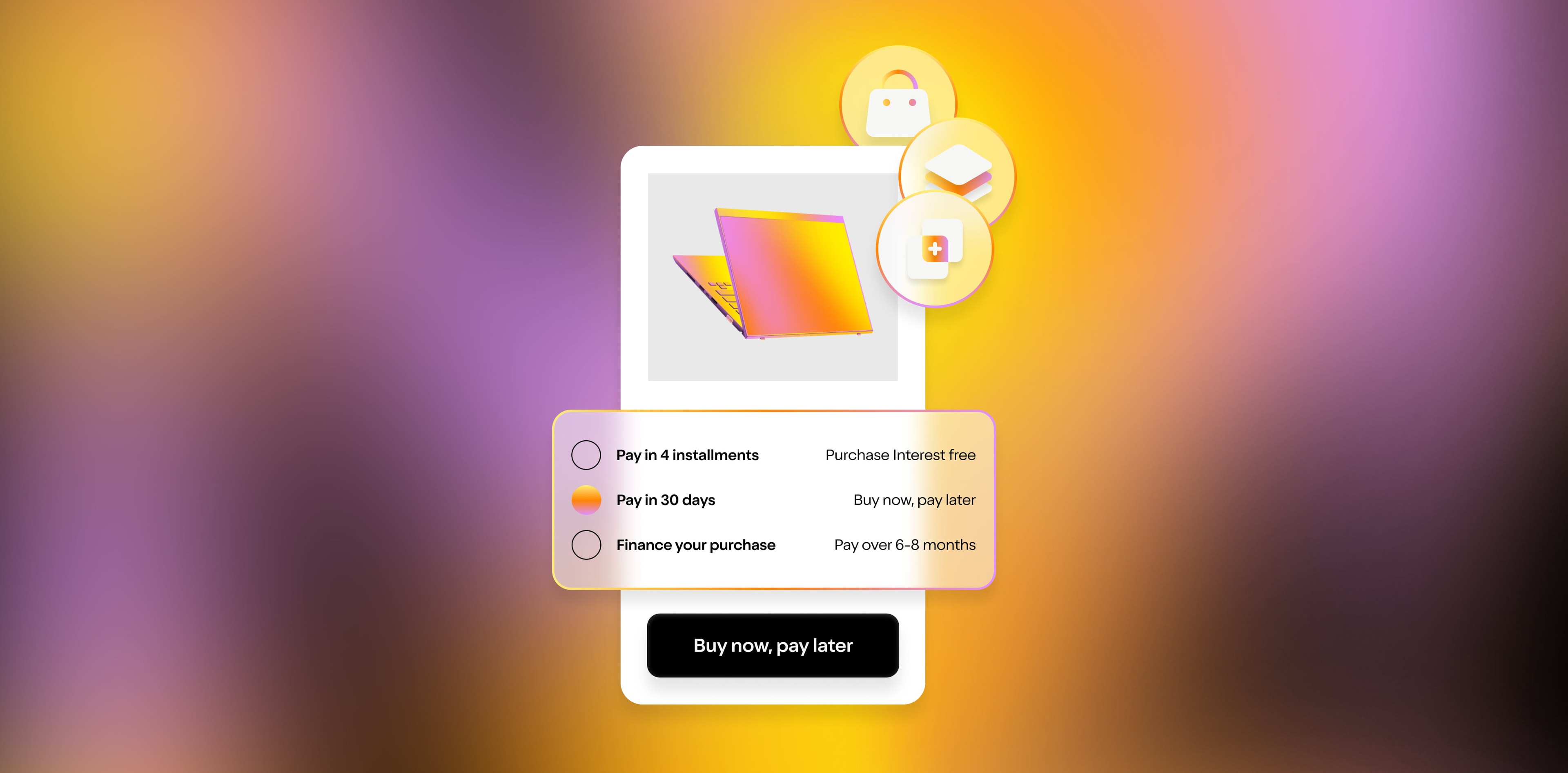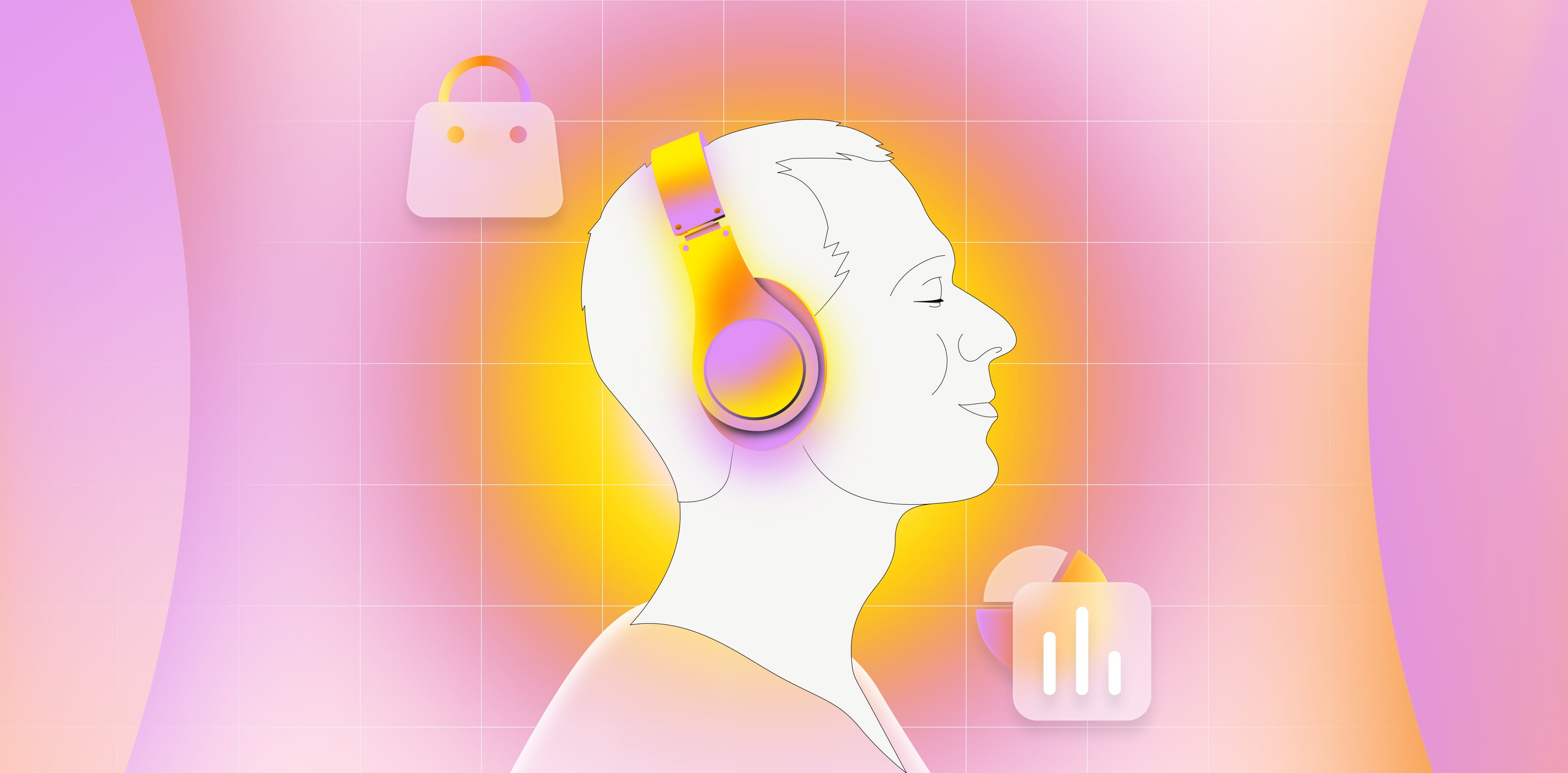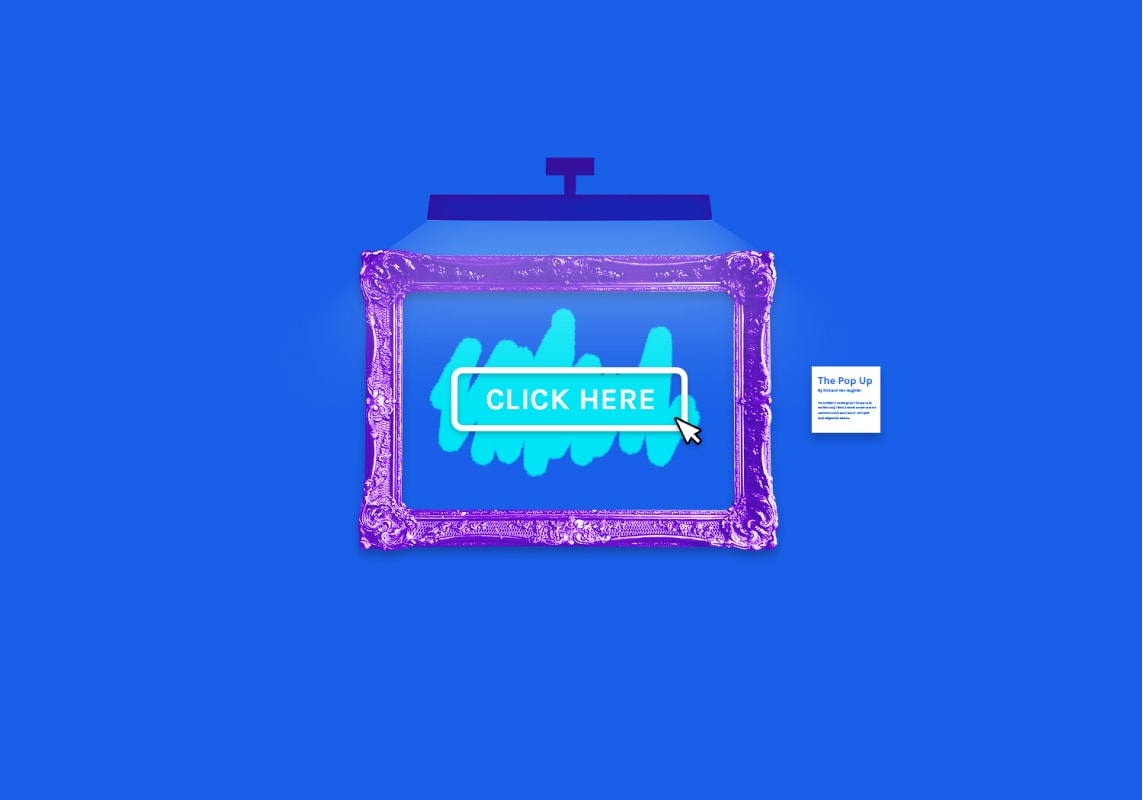3 Must-Haves for a Successful Loyalty Program: Tiering, Product Protection, and Experiences
Growing up, some of my most prized possessions were my punch cards for my local ice cream shop.
I’d go out of my way to spend my babysitting money at that particular shop, even once we moved to a different neighborhood and it was harder to get to. Collecting little holes on a credit-card-sized piece of colorful cardstock was incredibly satisfying — and so was the free cone I got after every nine visits.
That ice cream shop punch card was one of my earliest exposures to loyalty programs.
But they’ve evolved a lot since then.
And thank goodness, because a punch card wouldn’t cut it nowadays.
(Not least of all because I no longer carry a wallet, thanks to Apple Pay, so I would have nowhere to collect said punch cards even if brands gave me them.)
And also because more and more retail purchases are happening online. Per the U.S. Department of Commerce , ecommerce sales reached $250 billion in the first quarter of 2022, making up around 15% of all retail sales.
That number is only growing — it’s slated to be 22% of all sales by 2025.
Here, we look at the impact that a loyalty program can have on your retail business, how loyalty programs are changing, and three ways to make sure yours is successful:
How have loyalty programs changed?
Right before the pandemic began — in an article published on March 5, 2020 — McKinsey made a bold claim: loyalty programs were “static,” “relying on increasingly outdated rewards and redemption strategies of the past.” They posited that the future of loyalty programs would be in “ecosystems,” or brands working together to offer products, services, and experiences that complemented each other.
“Consumers are looking for something more” than “earn-and-burn” programs, or pure discounts, they said. Brands that offered unique content and more engaging experiences would come out ahead.
But then the pandemic hit, and consumers were driven back to prioritizing price.
McKinsey research from the end of 2020 found that 35% of U.S. buyers tried a new brand in the first six months of the pandemic due to price sensitivity and product availability.
That doesn’t mean they stopped caring about experiences, though. So now, another year and a half into the sped-up future of ecommerce, customers are looking for both facets: a loyalty program that drives financial value (even if it’s one they have to pay to join) as well as one that offers a richer ownership experience .
Now, loyalty programs can take multiple forms, as explored by customer satisfaction leader Zendesk . Those can include:
Points programs
Tiered programs
Free and paid programs
Mission-driven programs
Gamified programs
Community engagement programs
Umbrella programs
Why have a loyalty program at all?
It’s all about psychology.
Consumers who belong to a brand’s loyalty program are more likely to feel a strong attachment to the brand, according to KPMG research.
And depending on what you sell and who you sell it to, a customer loyalty program may or may not make sense for your particular business.
But writ large, customer loyalty programs are powerful and popular: the Harvard Business Review reports that there are more than 3.3 billion memberships in the U.S. alone.
Per that report, benefits of loyalty programs include:
Higher revenue, since program members are more likely to buy from that brand than from a competitor
More engagement, as members visit websites and stores more often than non-members and are more likely to download retailers’ apps or follow them on social media
More successful word-of-mouth advertising, because members are more likely to recommend the brand to family and friends
A bonus pro of loyalty programs: they offer an opportunity to communicate with your customers in a way that puts them first.
As we covered in our report The Touchpoint Trojan Horse , people are so inundated with marketing emails that they can’t keep up — and don’t want to.
The average American gets 200+ emails a day.
Most of those get ignored.
Transactional emails — or emails that convey important information on a purchase, like an order confirmation or a reminder about what bonus perks a consumer’s purchase unlocked — are opened more than promotional emails.
Savvy ecomm marketers see that a loyalty program can offer a valuable way to connect with customers, no matter where they are in the funnel. And that such programs can help them collect first-party data to further improve marketing outreach.
Potential customers who left items in the cart might get a notification or email offering a discount on their initial purchase if they sign up for a loyalty program.
Customers who buy directly from the retailer could get personalized post-purchase outreach inviting them to become a member of the brand’s community.
Customers who come from third-party channels may get funneled in through a registration portal (like Clyde’s ) and get an offer to join a loyalty program after doing so.
But no matter how big your loyalty program is or how you market it to consumers, there are three things that will make it stronger:
1. Offering multiple tiers of a loyalty program
The number-one thing you should be doing with your loyalty program? Charging for it.
It might sound counterintuitive. If consumers want to save money, why would they shell out for a paid membership at the very jump?
But if it’s good enough for Costco…
(For the uninitiated, you need to pay a $60 membership fee , renewable every year, in order to access the sweet, sweet deals at Costco, a wholesale club where you can get 30 rolls of toilet paper for a grand total of $22.99.)
In all seriousness, paid loyalty programs work because they drive higher purchase frequency, bigger basket sizes, and more brand affinity, according to McKinsey . Once customers pay for access to your program, they'll get their money’s worth for it.
Still not sure? Consider that:
Members of paid loyalty programs will buy more from you: they’re 60% more likely to spend more with the brand after subscribing. Free loyalty program members are only 30% more likely to spend more.
They’ll also choose you over competitors more: 59% will be more loyal after paying for a loyalty program.
Amazon Prime is by far the most popular paid loyalty program in the States, with 48% of survey respondents saying they pay for a Prime membership. But who’s to say your company couldn’t join that list?
2. Including product protection for loyalty program members
If you’ve bought an Apple product at any time in the last decade, you were offered the chance to protect your purchase with AppleCare . The extended warranty and service option is incredibly popular, resulting in billions of dollars of revenue each year.
But offering solid product protection plans requires some investment. Even if you work with a one-stop-shop platform like Clyde , you’ll need to incorporate it into your existing checkout and purchase flows.
Offering product protection for your top-tier loyalty program members can help make a paid loyalty program option feel worth it for both parties — you and your consumers — while also providing a better overall customer experience. (And continuing to build the bond between you and your buyers, since a 2015 survey found that consumers who buy extended warranties or service contracts have stronger emotional attachments to the products they buy.)
McKinsey found that paid loyalty programs made sense in two scenarios:
When a company wants to offer premium rewards and needs to fund them
When a company wants to lock in customers in industries where consumers often switch brands (like with pharmacies)
Including a product protection plan can help boost customer loyalty and engagement in the long run — and can make paid loyalty programs all the more successful.
3. Add experiences to your loyalty program
Getting customers to sign up for your loyalty program is one thing.
Getting them to stay? Another thing entirely.
And per research , discounts aren’t enough to keep loyalty program members around — but personalized experience and gated content are.
It’s the same trend we’ve seen in other ecommerce growth success stories : bringing people together and creating unique content by and for them can massively impact customer satisfaction and participation.
Your loyalty program could offer:
Product roundtables where members could ask engineers or designers questions about their favorite products
Member meetups in major markets, where you could host VIP members and introduce them to each other to create in-person community
Virtual events including expos and webinars to connect experts (whether internal or external) to your bought-in customers
Volunteer opportunities where members could join your employees in giving back to causes relevant to your company’s mission
Exclusive access to a community forum or chat for loyalty club participants to connect and talk about your products and other topics
Driving the future of loyalty
Loyalty programs can help boost customer spending by up to 50% — so if you don’t already have one, now’s the time to invest in building it.
But make sure that your loyalty program, whether it was born today or has existed for years, responds to what customers in 2022 are looking for. That’s price sensitivity, yes, but it’s also community, exclusivity, and an enriched ownership experience that makes them feel like you’ve got their back.
SIGN UP FOR OUR NEWSLETTER
